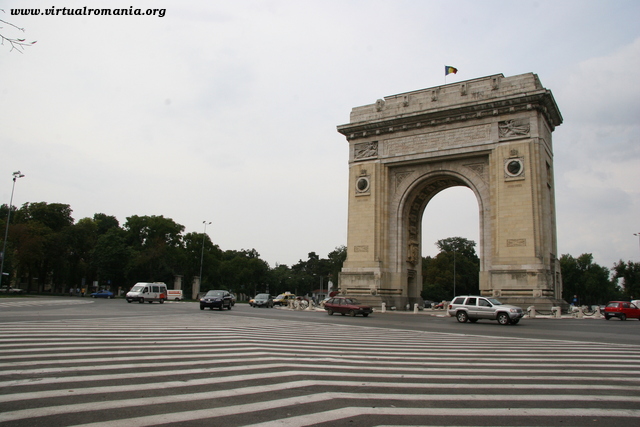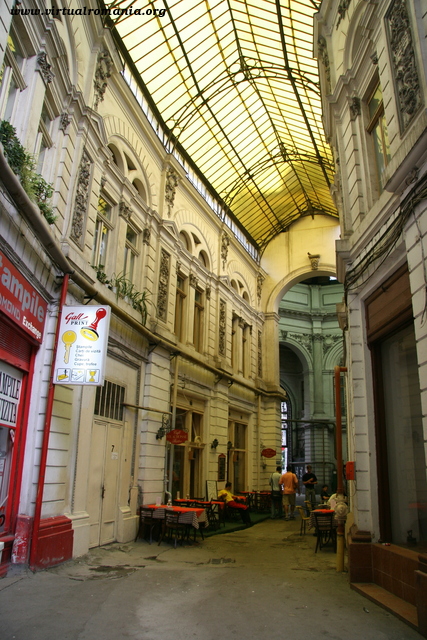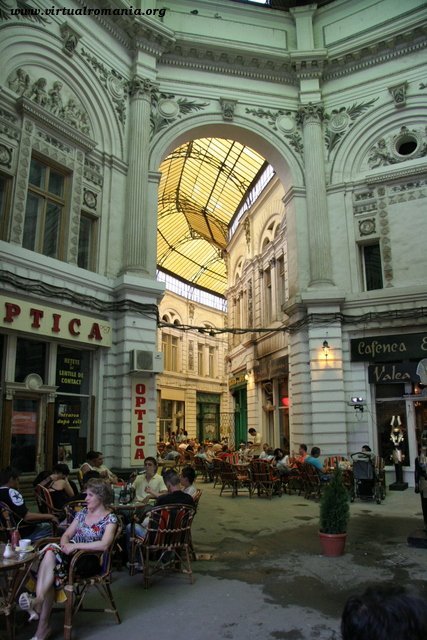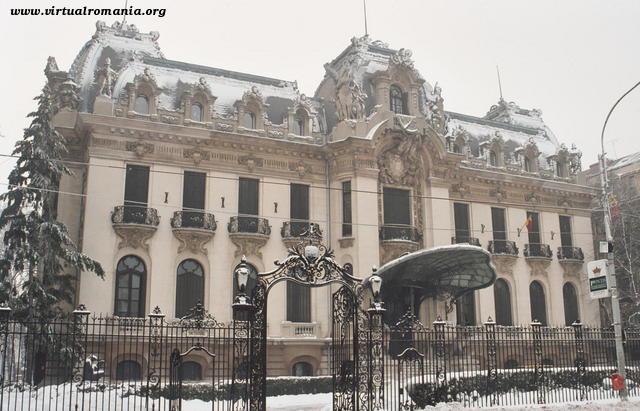Romanian Atheneum
This is Bucharest's most prestigious concert hall and one of the most beautiful buildings in the city. It was built in 1888 in neo-classical style after a design by the French architect Albert Galleron. The project was conceived by the diplomat Constantin Exarcu and the money for the completion of the building were gathered in a public collection in which people were asked to "give a leu for the Atheneum" (The "leu" being the currency of Romania). With its 40 m high dome and the Doric columns it resembles an ancient temple. The beautiful facade is adorned with mosaics of five Romanian rulers. On the inside there are scenes from Romanian history. This is the place to hear classical music in Bucharest. The resident orchestra is George Enescu Philarmonic. Address: Piata Revolutiei (Revolutiei Square).
The Palace of the Parliament
The Palace of the Parliament in Bucharest, Romania is a multi-purpose building containing both chambers of the Romanian Parliament. According to the World Records Academy, the Palace is the world's largest civilian building, most expensive administrative building, and heaviest building.
The Palace was designed and nearly completed by the Ceaușescu regime as the seat of political and administrative power. Nicolae Ceaușescu named it the
House of the Republic (
Casa Republicii), but many Romanians call it the
People's House.
The
building is a big tourist attraction in Bucharest ,the second largest building in the world in terms of surface, competing with the Pentagon in size. The Palace measures 270 m (890 ft) by 240 m (790 ft), 86 m (282 ft) high, and 92 m (302 ft) underground. It has 1,100 rooms, 2 underground parking garages and is 12 stories tall, with four underground levels currently available for the general public and in use, and another four in different stages of completion. The floorspace is 340,000 m
2 (3,700,000 sq ft).
The National Bank of Romania
 The National Bank of Romania
The National Bank of Romania sits on the site of one of the most famous buildings in Bucharest, Hanul Serban Voda (Serban Voda Inn) which was located here between the years of 1678-1883. In 1883 work began on the National Bank building, after a design by the French architects Cassien Bernard and Albert Galleron. The building has a French Neo-classical style, with a facade with Corintian columns, and 4 statues representing Agriculture, Industry, Justice and Commerce.
Villacrose and Macca Passages
Villacrosse and Macca passages are two pedestrian alleys roofed with glass and wrought iron and lined with shops, cafes and restaurants. They were built at the end of the 19th century. Entrance from Calea Victoriei across the police headquarters and from E. Carada Street.
The Triumphal Arch

In northern Bucharest, along Sos. Kiseleff lies Bucharest's Triumphal Arch (Arcul de Triumf). Modelled on the triumphal arch in Paris, the structure was erected in 1935-1936 to commemorate the creation of Greater Romania which took place in 1918. It sits on the spot where two earlier arches stood: the first arch made of wood and cardboard was erected in 1878 to mark Romania's independence from the Turks; the second arch made of timber was erected in 1922 to mark Ferdinand's entry into Bucharest as the first king of Greater Romania. The current arch is built of concrete and granite. Portraits of King Ferdinand and Queen Marie decorate one face, while the names of battles fought by Romanians during the First World War can be seen on the other face. The portraits of the king and queen were destroyed during the communist rule but they were restored in 1992. The sculptures decorating the arch were created by leading artists of the day, including Ion Jalea, D. Onofrei and Constantin Baraschi.
The Cantacuzino Palace
This palace was designed by the architect I.D.Berindei in French baroque style and construction was started in 1899. Above the main entrance there is a giant shell-shaped porte-cochere; two stone lions guard the entrance. George Enescu - Romania's national composer - lived here for a period of time. The building belonged to his wife Maria Cantacuzino. In fact Enescu preferred a life of simplicity and he and his wife chose to live in a smaller town house that previously housed the administrative staff of the palace; this house is located behind the main palace. Nowadays the palace houses the George Enescu Museum which displays the musicians manuscripts (scores of his compositions) and personal belongings like one of his first violins. Address: Calea Victoriei 141.












No comments:
Post a Comment